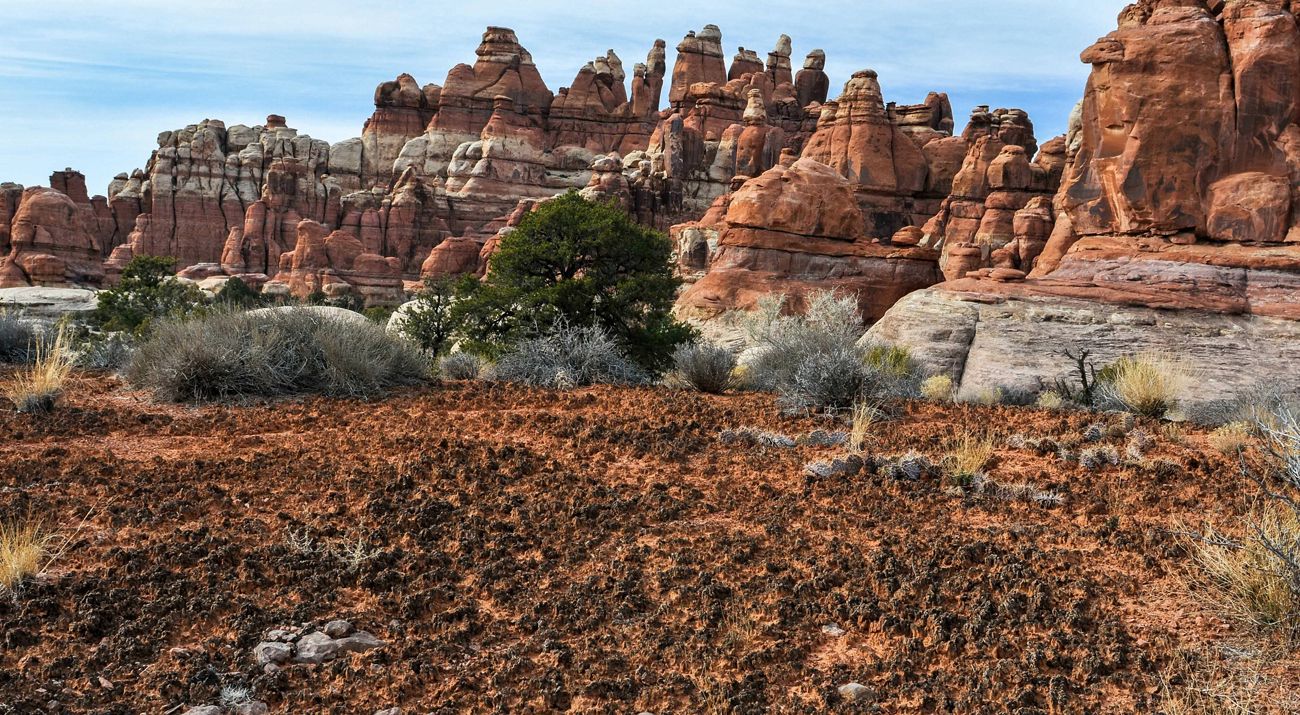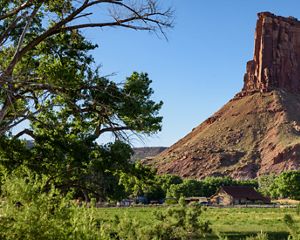Healing the Desert
Scientific break-through could help restore arid lands.
By Larisa Bowen, Senior Writer/Editor, Western US and Canada Division
Have you ever laid on your belly in the desert? Dr. Sasha Reed has. A lot. Reed is a soil ecologist with the U.S. Geological Survey (USGS), based in southern Utah’s canyon country. Getting eye-level with the desert floor is how Reed studies her most exciting subject: biocrust.
What is Biocrust?
Just centimeters off the ground, biocrust is the craggy, often dark or burnt looking carpet stretching between shrubs and grasses in arid lands. It’s actually the desert’s skin—a community of lichens, mosses and cyanobacteria that live on the soil surface of drylands.
So how is biocrust exciting? This complex community plays an astonishingly important role in sustaining the entire desert ecosystem, and also in protecting human health.
Today Dr. Reed is animated...make that joyful. “I often study all the climate change impacts and threats, the pollution and damage,” she enthuses. “But this project, this is about hope. We are finding new ways to bring biocrusts back on the landscape, and it just feels so useful and so... good!”
Reed’s enthusiasm is contagious and well-founded. That’s because she and the USGS, along with The Nature Conservancy, Northern Arizona University (NAU) and Rim to Rim Restoration, are attempting the world’s largest-scale cultivation of whole biocrust communities. The ground-breaking project was funded by a Wildlife Conservation Society (WCS) grant through their Climate Adaptation Fund with support from the Doris Duke Charitable Foundation.
If the team succeeds, they will achieve a major break-through for restoring biocrust in the face of climate change—and it could help reverse ecological damage and protect human communities in drylands around the globe.
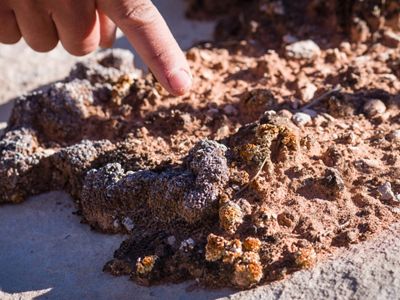
Why Worry about Biocrust?
Biocrust is more common than you might think. Drylands cover roughly 40% of the planet, and within drylands, biocrusts are a dominant land cover—meaning about 12% of Earth’s surface is biocrust.
In the deserts of the southwestern United States, biocrust is especially widespread, and around Dr. Reed’s home in Moab, a town nestled in the heart of Utah’s canyonlands, it’s also revered. “Don’t bust the crust,” is local etiquette—and it’s also a warning—to the millions of tourists who trek through the region’s famed public lands and national parks. That’s because scientists have proven that biocrust is fragile. Once damaged by humans or animals, the delicate crust can take hundreds of years to recover. Public awareness is also growing about the importance of biocrust, not just for desert plants and animals, but for humans too.

We Can’t Protect Utah Without You
Sign up to receive monthly news and stories about our conservation progress. Get a preview of Utah's Nature News email.
Desert Mighty Mite
They might not be the desert’s most charismatic feature, but biocrusts, with their complex, microscopic communities, are a rich and powerful part of life in arid lands. Just as coral reefs are critical to tropical marine habitats, biocrust is the ecosystem engineer of Earth’s drylands. Biocrust provides important services to people and nature by:
Sue Bellagamba, TNC’s Canyonlands Regional Director, who is partnering with Dr. Reed, sums it up this way: “Biocrusts are the keystone element of the landscape out here. If we lose the biocrust, we see major impacts on the soil stability, vegetation and wildlife of the entire region.”
The reality is that if we lose biocrust, people will also suffer. A look back to the 1930s in the United States provides a grim reminder of what happens when the stability of soils is compromised. When healthy biocrust is doing its job, it prevents the soil loss caused by wind and rainstorms. Without it, there is much less to hold the desert soil in place. Massive dust storms, which are increasing in frequency across the Southwest United States, and in arid lands around the globe, are becoming more hazardous for people. Dust from one region can travel hundreds of miles. These storms limit visibility, threaten drivers and airplanes and wreak havoc on the human respiratory system.
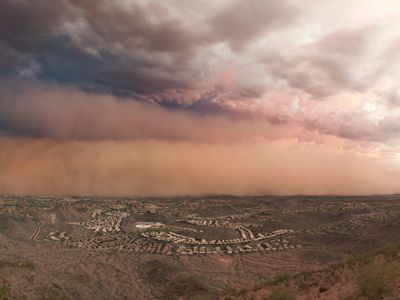
Quote: Sue Bellagamba
If we lose the biocrust, we see major impacts on the soil stability, vegetation and wildlife of the entire region.
Biocrust Under Threat
In one sense, biocrust is surprisingly tough. Its organic super grip stands up to relentless desert winds and the driving rains of seasonal monsoons. Yet this special set of organisms is also vulnerable, and on the Colorado Plateau, biocrust is increasingly in trouble. For years, scientists have been tracking the loss of biocrust communities and the damage wrought by feet, hooves and tires. Now, Bellagamba explains, there is another, even more worrisome threat: climate change.
“Here at in Utah’s Canyonlands we are already seeing the increasing temperatures and prolonged droughts,” says Bellagamba. “Scientists warn us that these trends will not only continue, they will get more intense.” For biocrust, this is bad news. In a study conducted by the USGS in Utah, the red flags were clear: long-term experimental climate warming resulted in the dramatic loss of biocrust mosses. Scientists warn that in the face of a warming climate, these biocrust losses could occur around the globe.
In short: we have a small window of time to figure out how to protect the very fabric of dryland ecosystems.
Soil Skin Grafts— Breakthroughs and Setbacks
“The great thing about science is that it’s a journey,” Reed says. “Everyone’s making advances, and you end up with a new improvement on an important idea.” In the race to save biocrust, one new and important idea involves the first biocrust farm, now located just north of Moab, Utah.
For years, scientists thought that biocrusts grow and recover from disturbance too slowly to make restoration feasible. But recent studies showed that biocrusts can be successfully grown under greenhouse conditions and restored more quickly.
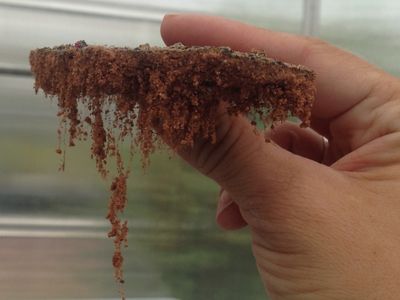
Energized, scientists began attempting to restore biocrust by conducting a kind of skin graft for the desert: taking healthy crust from one region, growing it in a lab and attempting to replant it in another region where biocrust was needed. The greenhouse biocrust was growing faster than expected, but there were major road blocks. First, scientists did not have a large-scale restoration solution because they had to remove healthy biocrust in order to grow it and transplant it, and second, and perhaps more daunting, after scientists removed the biocrusts from the greenhouse and replanted them in a new desert environment—they died.
This is where, in 2017, fueled by the WCS grant, Dr. Reed and her collaborator, Dr. Colin Tucker from the USGS, joined with TNC, NAU and Rim to Rim Restoration at the Canyonlands Research Center (CRC) to test something new. The CRC is located at TNC’s iconic Dugout Ranch property at the gateway to the Needles District of Canyonlands National Park.
“What we’re trying now is to find out if we could potentially grow large-scale biocrust communities before putting them back on the landscape,” says Reed. “And we also realized that the greenhouse made life too easy for the biocrusts.”
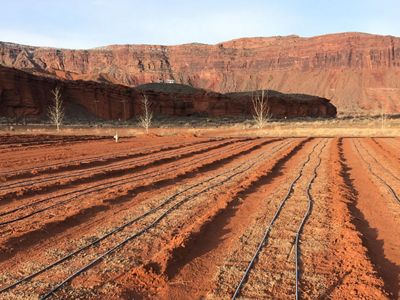
Support Our Work in Utah
You can help us do important conservation work in the Canyonlands and beyond.
Donate NowA First-of-its-Kind Farm
Reed, Tucker and the WCS grant team salvaged and harvested biocrust from the Mojave and Sonoran Deserts, with plans to grow them—to a large scale—and to test transplants onto the Colorado Plateau. The team harvested biocrust only from areas already slated for development (for roads or pipelines), to ensure they were not damaging other healthy crusts.
The idea is that these biocrusts, coming from deserts located further South and West, are already adapted to survival in hotter and drier conditions, so they will be better suited to thrive on the Colorado Plateau, which faces increasing heat and drought under climate change.
A key difference in this restoration experiment? The scientists ditched the greenhouse. With help from Rim to Rim Restoration, they planted the harvested biocrusts outside. “We realized that in the greenhouse, we were not preparing those organisms for the hard experience of the real world,” Reed explains. “The outdoor nursery allowed us to reduce impact to the biocrusts, but also to build up hardiness in their cells, and expose them to real temperatures, and real wet and dry cycles.”
The first-of-its-kind farm, located at the Mayberry Plant Prorogation Center near Moab, owned by Rim to Rim Restoration, played the critical role of “growing” the harvested biocrusts for a couple of years to acclimatize them to local conditions.
And grow they did. By this fall, 1.7 acres worth of farm-grown biocrust appeared healthy and ready for transplant. The size and pace of growth at the biocrust farm marks an important success for restoration science.
Rolling Out the Crust
“The biocrust farm and the sod techniques were an outrageous success,” bubbles Reed. The scale of the biocrusts’ growth on the farm was a major coup, and Dr. Reed is highlighting another innovative aspect of this experiment: the transplant process. When scientists prepared to introduce the farm-grown biocrust to its new home on the Colorado Plateau, they tried something different.
“We didn’t just sprinkle the biocrust over the landscape,” explains Reed. “We collected the crusts from the farm in packages, kind of like sod, and rolled it out over the restoration site, creating these islands that act like anchors. We’re hoping it will increase our chances of success.”
Quote: Dr. Sasha Reed
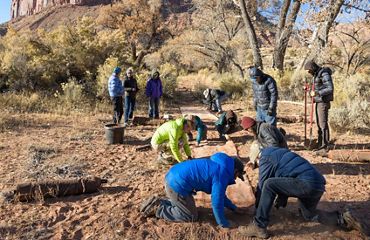
The biocrust farm and the sod techniques were an outrageous success.
On a brisk morning this past October, local volunteers joined the research team to carefully unroll these sod “islands.” They gently transplanted the farm-grown biocrusts onto two large sample sites at the Canyonlands Research Center and at another property northeast of Moab.
Now another crucial waiting period begins as the team monitors how the farm-grown biocrust fares. Reed notes it could take several years for the biocrust to grow. “If it’s dead, we’ll obviously know that right away in the first year, but the recovery of biocrust communities is not linear, there are certain good growth years, and others not as good, so we’ll be looking for a long-term perspective on whether this worked.”
Harvesting Hope
The promise and potential of this project are real. “If we succeed, it would be a significant advance in our ability to help resource managers bring back biocrust communities,” Reed notes. “People would be able to grow biocrust without disturbing much land, a lot of new technology could take off, you could automate biocrust harvesting, increase the scale of the process and open a really exciting new pathway for restoring much larger areas.” Based on their initial findings, the team has already created a fact sheet and manual for land managers interested in innovative restoration options.
Bellagamba, a 25-year veteran of conservation work on the Colorado Plateau, chimes in to underline the study’s importance: “At TNC, we’re always searching for science that matters on the ground—science that solves real problems affecting nature and people. This project is one of the best examples I’ve seen of that type of science.”
Even before the final results are in, though, Dr. Reed sees a major victory already won. She says she sees it not so much on the desert floor, but in the faces of the people around her.
“One of the things that recharges me and brings me joy is how involved the local community has been throughout this project,” Reed says. “I’m struck by how much interest, how many volunteers, and how much support there is for what we’re doing. People’s eyes just light up, and they ask me amazing questions, and they are so deeply excited by the idea that we’re finding new ways to restore the land. It’s been really powerful.” In fact, local volunteers have contributed more than 465 hours of time so far to help with the biocrust experiment.
For researchers, for land managers, for conservationists—for all of us—proof that we are finding ways to heal the Earth is exactly the type of discovery we need.
Quote: Sue Bellagamba
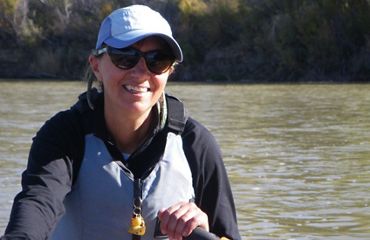
At TNC, we’re always searching for science that matters on the ground—science that solves real problems affecting nature and people. This project is one of the best examples I’ve seen of that type of science.
